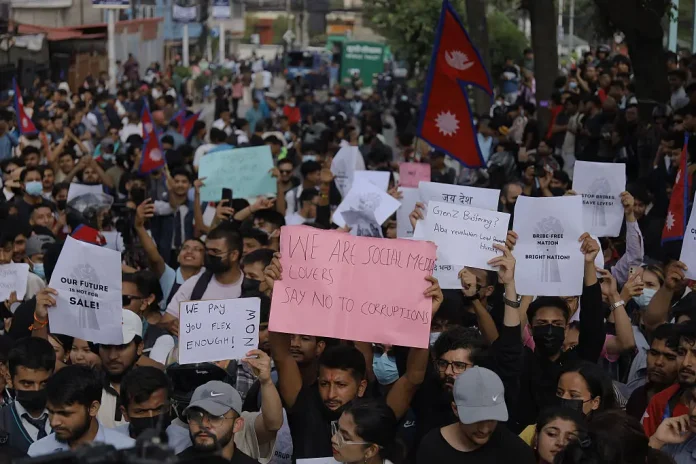– Syed Azharuddin
South Asia has been a theatre of political turbulence, with Afghanistan, Sri Lanka, Pakistan, Bangladesh, and Nepal grappling with upheavals, leadership changes, and street-driven revolts. Economic crises, corruption, ethnic fault lines, and demands for accountability have fuelled public anger, toppling governments and reshaping power structures. For India – facing rising inequality, youth unemployment, and growing polarisation – these developments are not distant tremors but urgent warnings. Understanding these crises offers India a roadmap to strengthen governance, prevent unrest, and secure long-term stability.
Afghanistan: The Fall of a Regime and the Return of the Taliban
Afghanistan’s dramatic collapse in 2021, following the Taliban’s return after U.S. withdrawal, exposed how years of corruption, insecurity, and foreign dependency can hollow out a state. While some local reports now cite reduced crime and tighter controls, humanitarian crises, curtailed rights – especially for women – and economic fragility dominate Afghanistan’s reality.
Lesson for India: Avoid governance vacuums. India must fortify internal security, integrate marginalised communities, and expand women’s participation in governance and education. In regions like Jammu and Kashmir, proactive conflict-resolution mechanisms and inclusive policymaking are essential to deny external actors space to exploit internal divides.
Sri Lanka: Economic Collapse and Mass Protests
Sri Lanka’s devastating financial crisis – fuelled by reckless borrowing, opaque fiscal policies, and elite impunity – sparked nationwide protests in 2022, forcing Gotabaya Rajapaksa to resign and dismantling a dynastic political order. The election of Anura Kumara Dissanayake in 2024 marked a rare instance where grassroots mobilisation reshaped state power.
Lesson for India: Fiscal complacency invites collapse. India must enforce strict oversight on public debt and subsidies while prioritising transparent resource management. Expanding citizen-feedback platforms and responding swiftly to economic distress can strengthen trust in institutions and prevent mass mobilizations spiralling into political upheaval.
Pakistan: Political Instability and Opposition Crackdowns
Pakistan’s ouster of Prime Minister Imran Khan in April 2022, coupled with the 2024 election controversies and crackdowns on opposition, exposed a democracy weakened by military influence and institutional erosion. Political volatility, youth-led protests, and economic stagnation continue to destabilise the state.
Lesson for India: Safeguard democratic institutions. India must protect judicial independence, uphold opposition rights, and ensure electoral integrity. By addressing youth unemployment and regional discontent proactively, India can avoid Pakistan-style polarisation and sustain a more resilient democracy.
Bangladesh: Protests and Authoritarian Reforms
Despite strong economic growth, Bangladesh witnessed violent protests in 2022-23 over corruption, job quotas, and human rights abuses under Sheikh Hasina’s government. Heavy crackdowns, arrests, and media restrictions exposed deep governance flaws, even as reforms like quota adjustments and anti-corruption drives were hastily introduced.
Lesson for India: Development without freedoms breeds unrest. India must balance economic expansion with protection of civil liberties, reform education and employment policies to address youth grievances, and safeguard free speech. Laws curbing dissent must be applied judiciously to channel dissatisfaction into dialogue rather than confrontation.
Nepal: Gen-Z Mobilization, Social Media Politics, and Governance Crisis
Nepal’s fragile coalitions and chronic political instability boiled over in 2025 when the government attempted to impose abrupt social-media restrictions, triggering a youth-led, digital-first uprising. Mass protests toppled the Prime Minister on September 9, 2025, exposing the fragility of Nepal’s governance and the growing power of online mobilisation.
Lesson for India: Do not provoke a digital backlash. India should adopt consultative, transparent policies on digital governance while avoiding unilateral controls. Engaging youth in policymaking and creating rapid-response mechanisms for grievances can convert online activism into constructive reform rather than street-level confrontation.
Charting a Path Forward for India
The political tremors across South Asia carry an unmistakable warning: when governance fails, the streets take over. Afghanistan’s fragile order, Sri Lanka’s financial collapse, Pakistan’s institutional decay, Bangladesh’s authoritarian excesses, and Nepal’s digital-age uprising – all point to one truth: neglected grievances, elite impunity, and policy arrogance invite rebellion. India must not ignore these lessons. It needs fiscal discipline, institutional integrity, youth empowerment, and justice-driven governance at every level.
But there is a deeper signal beneath the noise: in almost every one of these countries, it was the youth who brought regimes to their knees. India, the world’s youngest democracy, sits atop a demographic volcano. If elected representatives continue to govern with opacity, privilege, and contempt for public accountability, they risk igniting the same fury. This generation is digitally connected, politically aware, and impossible to silence.
India stands at a crossroads: choose justice-driven nation-building or face youth-driven reckonings. The message from South Asia is unambiguous – ignore the voices of the young, and they will rewrite the script of power.




